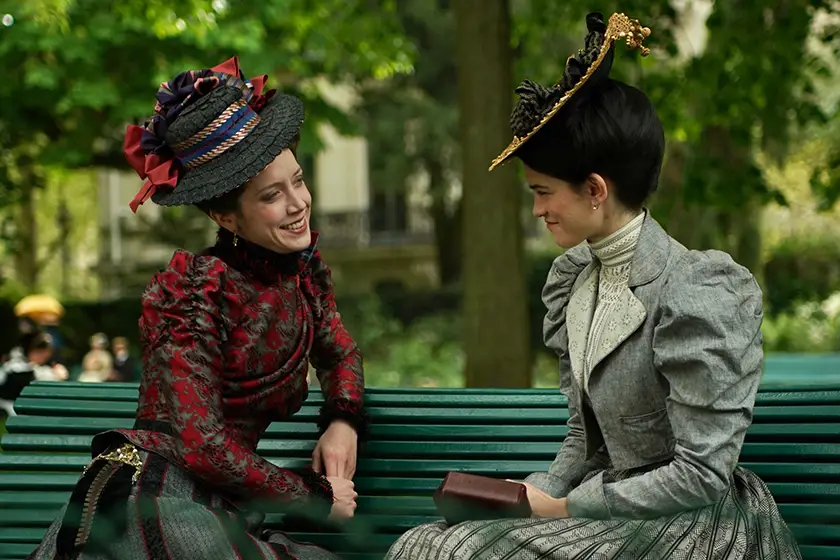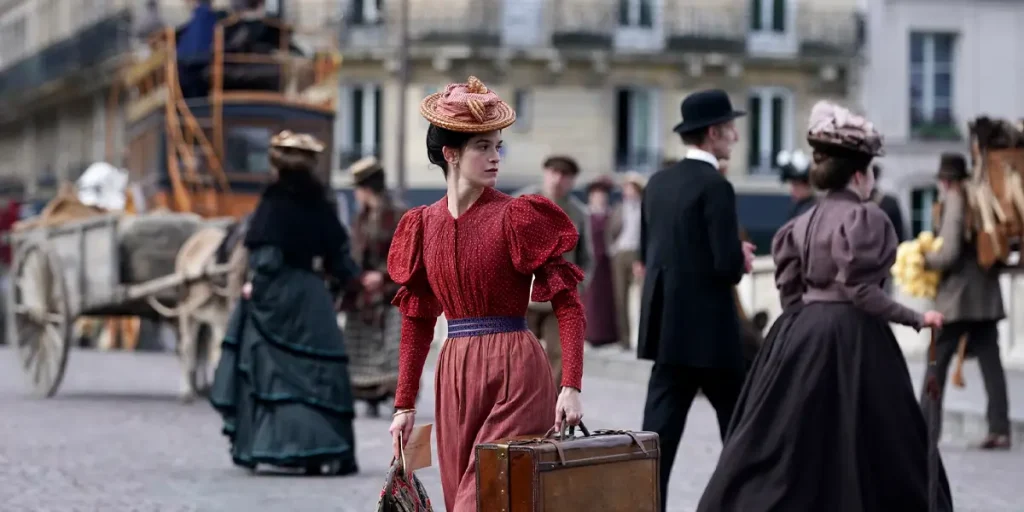The breezy and romantic Colours of Time jumps between 2024 and 1895 for its story about art, family history, and individual identity.
Director: Cédric Klapisch
Genre: Comedy, Crime, Drama
Run Time: 132′
Cannes Premiere: May 22, 2025 (Out of Competition)
U.S. Release Date: TBA
U.K. Release Date: TBA
Where to Watch: May 22, 2025 in French cinemas; coming soon in international theaters
For better or for worse, our identities are shaped by our families. This bittersweet truth lies in the heart of Colours of Time (La Venue de L’Avenir), a quiet, charming, and emotionally sensitive movie from filmmaker Cédric Klapisch. despite a well-regarded filmmaking career in France. Jumping playfully between 2024 and 1895, Colours of Time touches upon a great many topics, such as the ways in which we are informed by our family and family history, what it means to be a part of a family, what it means to be an artist, and the ways that people are the same no matter the age in which they were born.
Our story begins with the dissatisfied young filmmaker-turned content creator Seb (Abraham Wapler), who is at the Musée de L’Orangerie helping an influencer do a photo shoot for a clothing brand in front of Claude Monet’s masterpiece, “Water Lilies”. That’s probably not how he imagined spending his time while going through film school. He’s shocked and disheartened when the influencer suggests changing the color of “Water Lilies” in post to match with the dress. The movie’s running jokes about the superficiality of social media are amusing, but they are clichéd and lack the specificity of true understanding of influencer culture.
At the same time as Seb is reconsidering his career choices, he is tasked with visiting his family’s ancestral home, untouched since the 1940s, in Normandy to sort through the belongings before the city can purchase the abandoned farmhouse. Traveling along with Seb are three distant cousins: Algerian French teacher Abdel (Zinedine Soualem, a frequent Klapisch collaborator), neurotic girlboss Céline (Julia Piaton), and brash beekeeper Guy (Vincent Macaigne). As they discover faded photographs and old letters among the vine-covered estate, entrancingly brought to life by production designer Marie Cheminal, the four learn more about themselves and the way they fit into the world. The four actors are all game, elevating rather thinly drawn characters, and giving an amiable charm to even the more rote and mawkish moments.

La Venue de l’Avenir would be directly translating into English as “The Coming of the Future,” a highly appropriate title, as the movie intercuts these scenes of familial bonding with flashes back to 1895, when a young Adèle Vermillard (Suzanne Lindon), a gawky and bright-eyed twenty-one year old journeys from the Normandy farmhouse to Paris in search of a mother she never knew. While on the road, she meets two best friends, a sort of proto-Jules and Jim: painter Anatole (Paul Kircher) and photographer Lucien (Vassilli Schneider).
Together, the three live in relative Bohemian bliss in the City of Light, paying witness to the artistic creations, innovations and progress of the Belle Époque era, crossing paths with such luminaries as Sarah Bernhardt and Claude Monet. This section of the movie is romantic and gauzy, filmed in the soft hues of a summer morning by cinematographer Alexis Kavyrchine. It doesn’t capture the way that 1895 Paris would have realistically looked, but, perhaps, the way that it would in your imagination when listening to Debussy or reading de Maupassant. In the words of the cliché, Paris is a character in Colours of Time.
The plot structure of Colours of Time is clever and clear, but lop-sided, with the 1895 section of the movie more engagingly wrought than the one in 2024. The screenplay, from Klapisch and Santiago Amigorena, finds much more to say about the art and bohemian life of a bygone Paris than contemporary times, what with all the kids and their Tiktoks. The Belle Époque time period is one that Klapisch has spent hours daydreaming about, whereas he struggles to find the same amount of passion for our modern day.
Despite the misshapen quality of the movie’s structure, and the mushily sentimental moments, Colours of Time works as a whole. Klapisch’s hand behind the camera is light, genial, and welcoming. It’s hard to dislike Colours of Time as it takes in the romantic beauty of the City of Light and reminds of the impact of family on our personhood. And perhaps the real art is the family we find along the way.
Colours of Time (La Venue de L’Avenir): Movie Plot & Recap
Synopsis:
In 2024, Four cousins clear out the ancestral home in Normandy, France, leading them to learn more about the family that came before. In 1895, a young woman travels to Paris in search of her long-lost mother.
Pros:
- Beautiful production design
- Romantic cinematography
- Pleasant and light atmosphere
- Engaging performances, especially from Suzanne Lindon and Abraham Wapler
Cons:
- Thinly drawn characters
- Mushily sentimental in moments
- 1895 section more engaging than the 2024 section
Colours of Time (La Venue de L’Avenir) premiered at the Cannes Film Festival, out of competition, on May 22, 2025.

